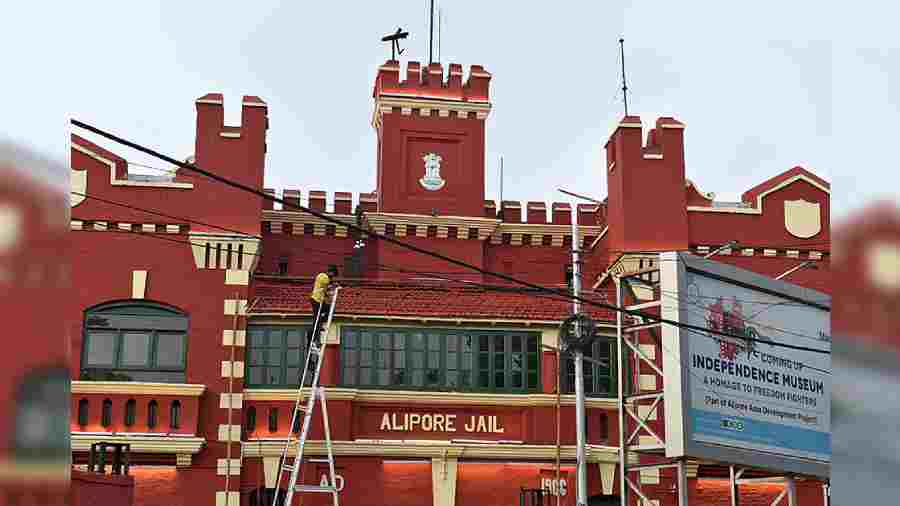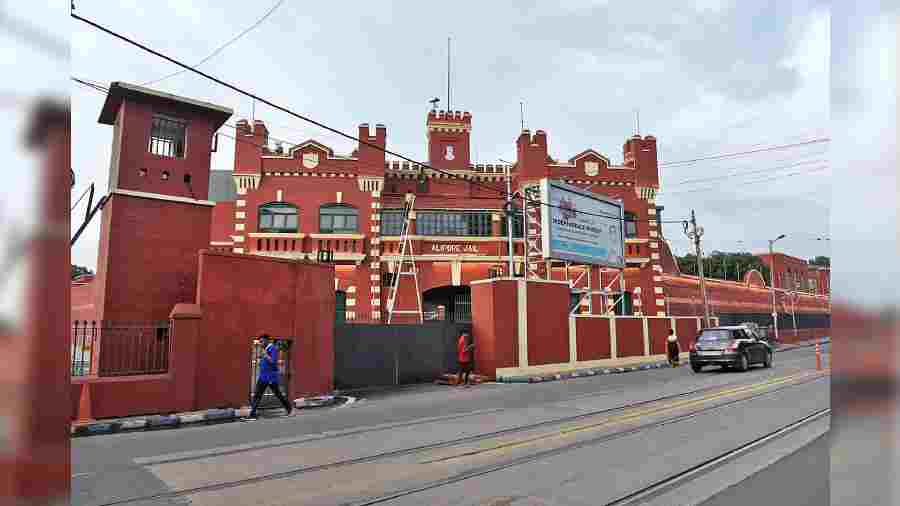From a single-accommodation cell inside the Alipore Jail Subhas Chandra Bose contested and won Kolkata’s mayoral election in 1930.
It was here that Bose had also cooked for his mentor Chittaranjan Das when both were imprisoned at the same time.
A young Indira Gandhi visited her father, incarcerated in a cell in the Alipore Jail.
The cells and the buildings where Bose, Nehru and Das stayed were never used to keep other inmates post-Independence and were preserved as relics of history.
Their places of confinement, however, remained closed to common people.
That is going to change when a museum that has been created inside the former Alipore Jail opens doors.
The jail shut down in 2019 and the inmates were shifted to Baruipur.
Chief minister Mamata Banerjee is likely to throw open the museum soon.
“The work of restoration in a portion that will be opened is almost done. We have sought a date from the chief minister for the opening,” said a senior member of the Bengal government.
Spread over 15.5 acres, the Alipore Jail premises has 35 buildings.
Partha Ranjan Das, the architect who is leading the conservation work, said five buildings have been restored so far and the museum will start its journey from the restored buildings.
The doors to the cells where Bose, Nehru and C.R. Das were interned and a central watch tower will be open to the public, said Das.
“We have done bare minimum restoration of these cells because the idea is to let people see how the cells were in those days,” Das said.
The first Prime Minister of India was imprisoned inside Nehru Bhavan — the name by which the one-storey building with an adjoining lawn was identified — between February 17, 1934, and May 5, 1934, according to a short description available on the website of the state’s correctional services department.
“Indira Gandhi visited Nehru while he was here,” said Das.
Netaji Bhavan, according to the website, is a two-storey building with several cells, in one of which Subhas Bose was jailed.
Besides Bose, others who were lodged in this building were C.R. Das; Bidhan Chandra Roy, former chief minister of West Bengal; and Jatindra Mohan Sengupta, a former mayor of Calcutta who Bose defeated to become the mayor.
Entering from the main gate facing Judges Court Road, visitors will first go under the main gate building, which has been restored fully. There will be a cafeteria on the first floor of the building, a ticket room and a cloakroom.
The cells of Netaji and Nehru will be ahead as well as the gallows, said Das.
The jail hospital building has been restored too.
An exhibition on the Independence movement has been created on the first floor of the hospital building while an exhibition with pictures and information about important events from Bose’s life is present on the ground floor. A laser show is part of the plans.
“This is huge work. Even in the buildings that have been restored, we want to wait and watch how they perform this monsoon, whether the roof leaks or sags,” said Das.
Bose was first arrested and put in the Alipore Jail in December 1921. He and C.R. Das were arrested together.
In an essay, Deshabandhu Smriti that Bose wrote from the Mandalay prison in then Burma in 1926 — published by Ananda Publishers in Sri Subhas Chandra Bosu Samagra Rachanabali (part 1) — Bose wrote that he came to know C.R. Das much better during their eight-month long stay in prison together, six of which were in Alipore Central Jail.
Bose wrote that during the internment in 1921-22, he met another inmate named Mathur who deeply admired Das.
Bose was again arrested and brought here in the latter half of 1924, while he was the chief executive officer of the Kolkata Corporation.

“For the first six weeks of his imprisonment, the chief executive officer of the Kolkata Corporation found himself lodged in the Alipore Central Jail of Kolkata. After he managed to turn his prison cell into a political and administrative office, the government decided, in early December 1924, to move him to Behrampur Jail in northern Bengal,” writes Harvard professor and Subhas Bose’s grand-nephew Sugata Bose in the book His Majesty’s Opponent.
Bose was again imprisoned and put in Alipore Central Jail on January 23, 1930, his 33rd birthday.
In April 1930, “Subhas suffered head injuries and was left unconscious for an hour,” when he was beaten up for protesting the assault on other inmates by the jail guards, Sugata writes.
“He was elected the mayor of Calcutta while serving a prison term in Alipore,” Sugata told The Telegraph on Saturday.
Himadri Guha, a structural consultant whose inputs were taken for the strengthening of the buildings, said all the cells had iron gates — vertical circular iron bars positioned in a row from left to right — and a window at the top of the back wall for cross ventilation. A 3ft or 4ft high wall on one corner of the room marked the lavatory.
“These have been kept in the same manner,” he said.
